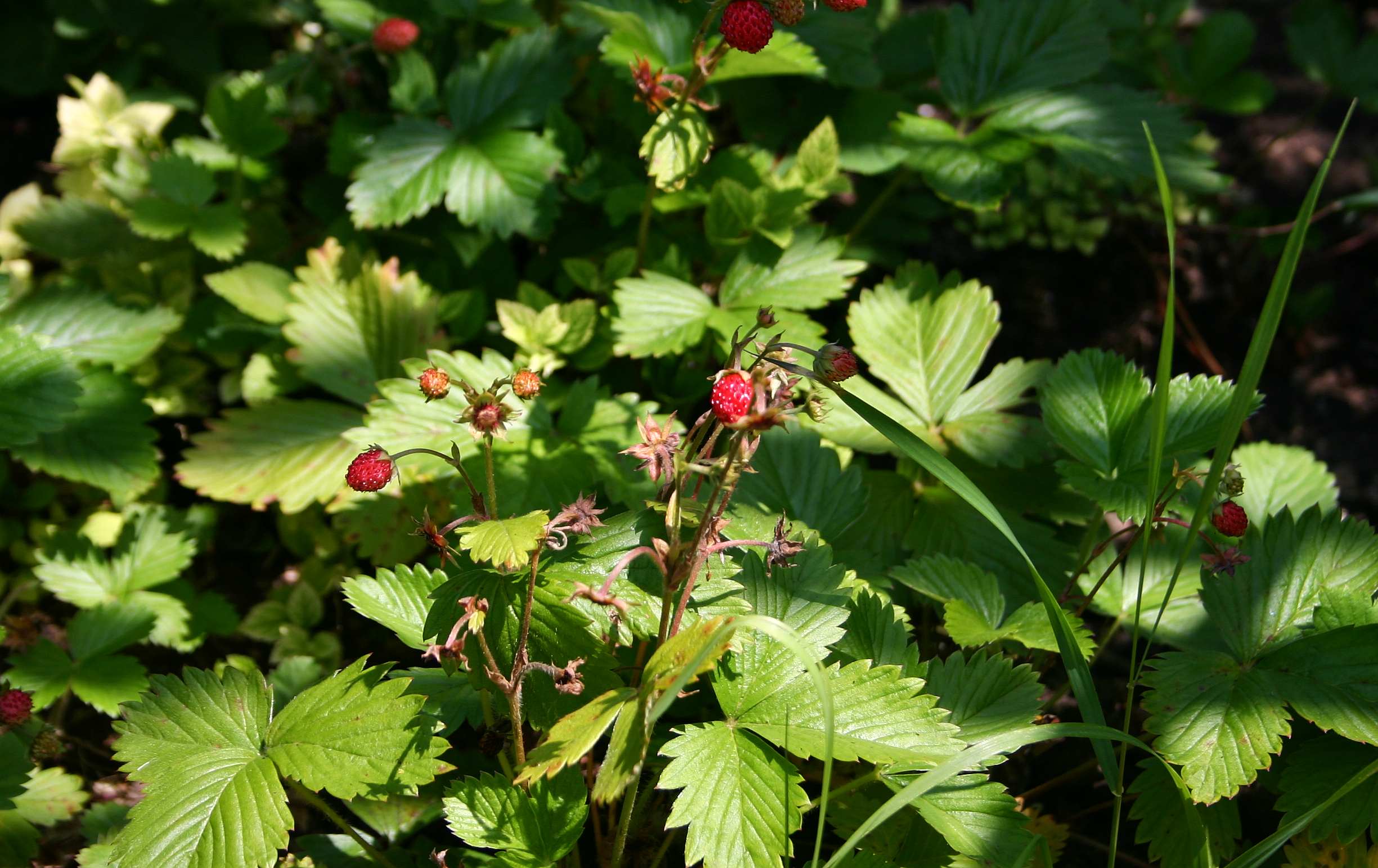Walking through the woods of our farm in midsummer - you couldn't help but be overwhelmed by the sheer abundance of life all around - from the tiniest wood sorrel to the towering oaks - the air buzzing with insects, and in exuberant bird song you could hear the joy of all nature's bounty.
On my wanders I was awe struck by the perfect design - all the different organisms living together in a harmonious symbiosis, a verdant community that seemed so vital and healthy. So self sufficient - it had probably changed very little in hundreds of years.
Seeing all of this natural fertility I wondered why man felt the need to work so hard to 'create' places to grow crops... Why were we ploughing the fields when so much fertility abounds when you leave nature to do the work for you?
So I set out on an experiment. I scattered seeds of every vegetable imaginable all around our woods, I even planted strawberry runners in the leaf mould. Needless to say these experiments were naive! Nothing grew.
The vegetables that I had sown had long been cultivated to be grown only in the full sun and super rich soil of the vegetable garden. They just couldn't cope with all the shade and competition from the already thriving ecosystem.
But I wasn't deterred. Soon after, I discovered that many others had had the same idea about this way of growing crops in harmony with Nature - and had called the system Forest Gardening!
In a Forest Garden a diverse community of plants are carefully grown together to create a self sustaining ecosystem of edible, medicinal and otherwise useful plants.
Because Forest Gardening is such a different method of growing food to the conventional vegetable garden or ploughed field, it was necessary to find a new array of crops that'll thrive in this setting and also provide us with plenty of tasty food.
Luckily pioneers like Ken Fern and Martin Crawford have already put a lot of energy into researching the trees, shrubs, climbers, and perennial vegetables that suit the Forest Garden - and these are the fascinating range of plants that this blog is devoted to - Forest Garden Plants.
Wild Strawberries covering the ground between trees - just as they would in a natural woodland:


Forest garden is the key, keep up the good work :)
ReplyDeleteAnd it makes your crop less conspicuous. Most people do not recognize wild edibles. They don't know what parts are edible or how to prepare them. They have apple trees they perceive as a burden because the apples scatter across their lawns. What is this? It's not sprayed with poison and wrapped in plastic. It must not be edible.
ReplyDeleteIf you find any edibles that grow well under pine trees, let me know. The soil is so acidic in one spot of my property. I've only grown sunchokes there and they did not come back last year and were half the height and crop as the rest in less acidic soil. I know the pine seed is edible, but the cones are small and usually empty by the time they hit the ground. asteedman.med@gmail.com
DeleteIf you find any edibles that grow well under pine trees, let me know. The soil is so acidic in one spot of my property. I've only grown sunchokes there and they did not come back last year and were half the height and crop as the rest in less acidic soil. I know the pine seed is edible, but the cones are small and usually empty by the time they hit the ground. asteedman.med@gmail.com
DeleteAnd it makes your crop less conspicuous. Most people do not recognize wild edibles. They don't know what parts are edible or how to prepare them. They have apple trees they perceive as a burden because the apples scatter across their lawns. What is this? It's not sprayed with poison and wrapped in plastic. It must not be edible.
ReplyDelete